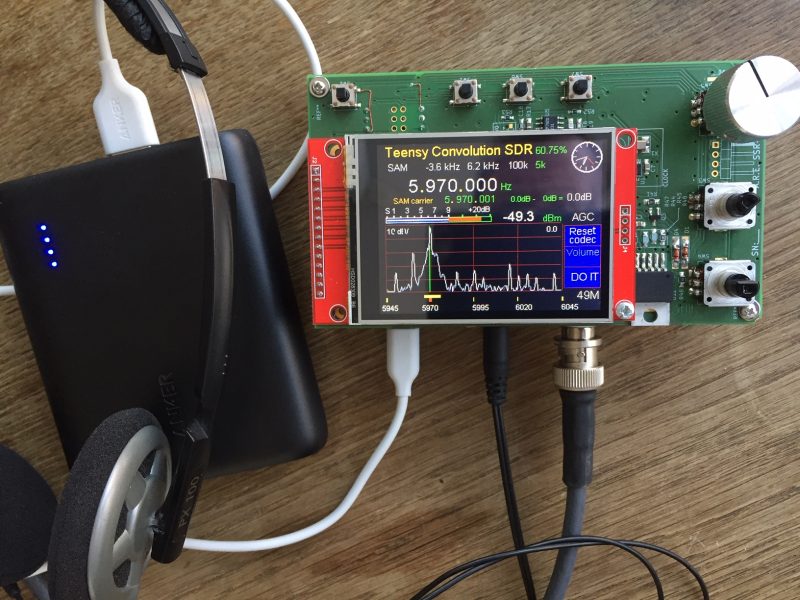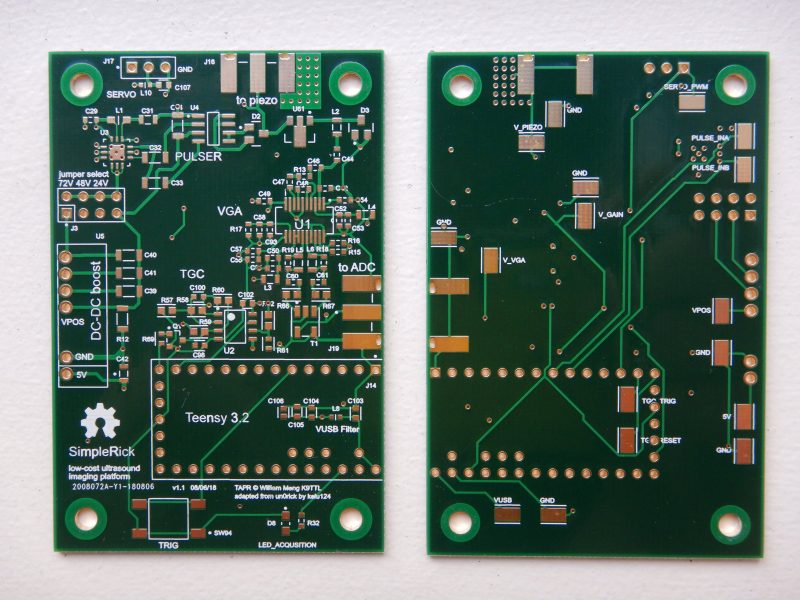PJRC forum user DD4WH made the Teensy Convolution SDR, a software defined radio for long wave, medium wave, short wave and wide band FM stereo.

Software defined radio (SDR) is a radio communication system in which the traditional hardware systems — such as mixers, amplifiers and filters — are replaced with software.
DD4WH used a Teensy 3.6, a PJRC audio board, a quadrature sampling detector (QSD), an oscillator capable of being tuned by I2C, three encoders and an antenna to make the Teensy Convolution SDR. DD4WH chose to do the main filtering and demodulation in the frequency domain using a fast convolution approach, enabling much steeper filters than the usual phasing approach.
Detailed specifications and a project guide for the Teensy Convolution SDR project have been published on DD4WH’s GitHub. The original forum post about the project is also really worth checking out, with helpful comments about sourcing components and troubleshooting the code.

